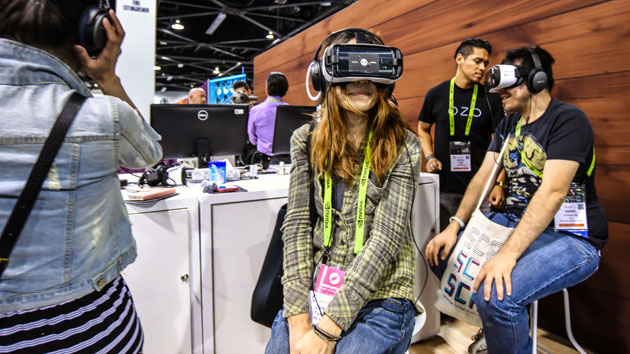GPU Tech Drives Use of Large Data Sets to Create Ever-More-Elaborate Visualization for Architectural, Medical Services
Not so long ago, the film industry was the star of SIGGRAPH. Yes, it was always a profoundly multi-disciplinary conference, bringing together students, scientists, researchers, and working practitioners under one roof. But VFX tentpole movies were the most visible culmination of computer graphics research, and its greatest ambassadors to the masses. And as recently as the mid-to-late 2000s, Hollywood tech stalwarts — Adobe, Technicolor and Sony's broadcast division among them — were SIGGRAPH's corporate sponsors.
But times change. These days, VR and visualization are the buzzwords driving discussion at SIGGRAPH. VFX are still a SIGGRAPH standby, but they share the spotlight with gaming, VR, themed entertainment, and heavy duty real-time visualization technology for design and health care. Has SIGGRAPH gotten less glamorous as a result? Maybe. SIGGRAPH reached its attendance peak way back in 1997, when more than 48,000 people gathered for the Los Angeles confab. Attendance has been on a fairly steep decline since, though it seems to have found equilibrium at around 14,000, where it has hovered over the past three years in Vancouver, Los Angeles, and Anaheim.
That's not necessarily a bad thing. "You shouldn't read doom and gloom into the attendance levels," cautioned Jon Peddie, founder of computer-graphics industry consultancy Jon Peddie Research, at a SIGGRAPH press event. "You should say, 'This is the right level for what SIGGRAPH is trying to accomplish.'" In fact, Peddie noted that similar events with equally lofty reputations — Germany's FMX and France's Laval Virtual were specifically mentioned — operate at similar attendance levels. And Peddie said that even as SIGGRAPH attendance has declined over the years, the total computer graphics market has climbed.
You certainly didn't have to pay too much attention to notice that many technology exhibitors were no longer focused on the usual VFX applications. For example, OptiTrack specializes in affordable motion-capture systems that have been used on features including The Jungle Book and Warcraft. But at SIGGRAPH, OptiTrack seemed more bullish on VR-driven themed entertainment, where its 3D tracking technology can drive themed multi-user experiences like those being built by The Void in New York City and Utah. Chief Strategy Officer Brian Nilles told StudioDaily that OptiTrack has sold equipment for 150 VR installations and said that 40 percent of its inquiries at SIGGRAPH 2016 were VR-related.
Nvidia, which announced what it said was its fastest GPU to date at the show, takes an explicitly macro view of the industry, casting innovation in terms of the bigger issues that apply across multiple markets served by Nvidia, including the challenges of artificial intelligence and deep learning. Bob Pette, Nvidia's VP/GM for pro visualization, identified them at a SIGGRAPH press conference as ever-larger data sets, VR, artificial intelligence, and photorealism. "The problems faced by the VFX and design markets apply to architecture, oil and gas, and medical, as well," Pette said. "I think this is going to be one of the biggest SIGGRAPHs ever for Nvidia."
After a market slowdown over the past 18 months, Maxon US CEO and President Paul Babb said, Maxon's Cinema 4D 3D modeling and animation software is gaining ground again with increased penetration into new markets, including mobile game development and medical animation. "This year, the biggest one is VR," he said. "Every trade show is VR, VR, VR."
And The Foundry Chief Customer Officer Jody Madden told StudioDaily that the company's acquisition of the modeling tool Modo back in 2012 has "opened many doors" for The Foundry in the design community. "So many people in the workplace are no longer afraid of modeling in 3D, and it becomes their initial approach," she explained. "In the last release of Modo, the new procedural modeling system's ability to do iterations and show multiple versions is extraordinarily rare and powerful. The boss will see 15 options instead of two in a few days instead of a month. So we're starting to see that shift in ways of working. People don't always think about a pipeline outside the VFX industry. They're OK working in silos, so the idea of sharing an idea across multiple departments? A lot of the time, that conversation is new."
Photo credit: John Fujii/© 2016 ACM SIGGRAPH
Did you enjoy this article? Sign up to receive the StudioDaily Fix eletter containing the latest stories, including news, videos, interviews, reviews and more.











Leave a Reply